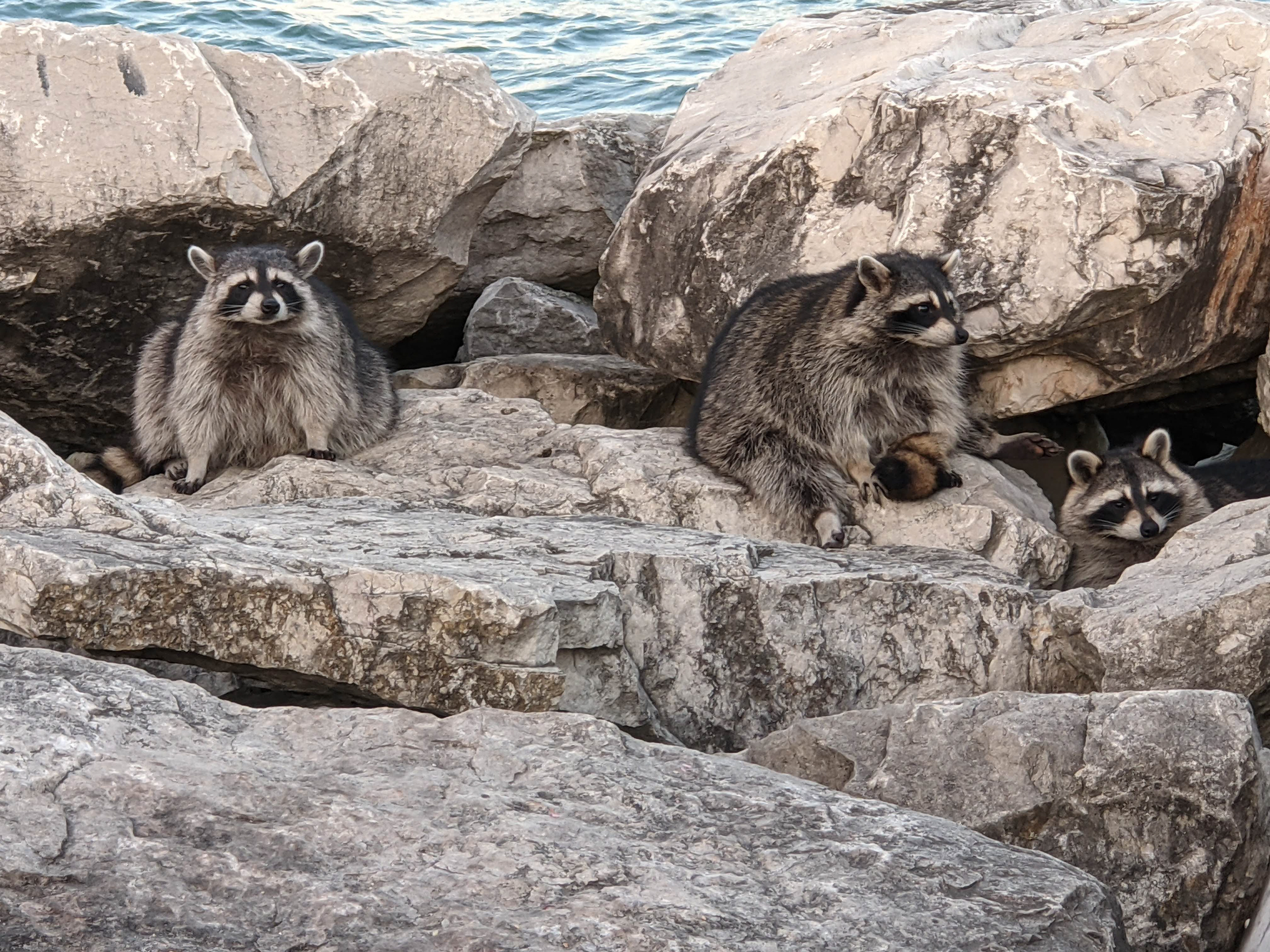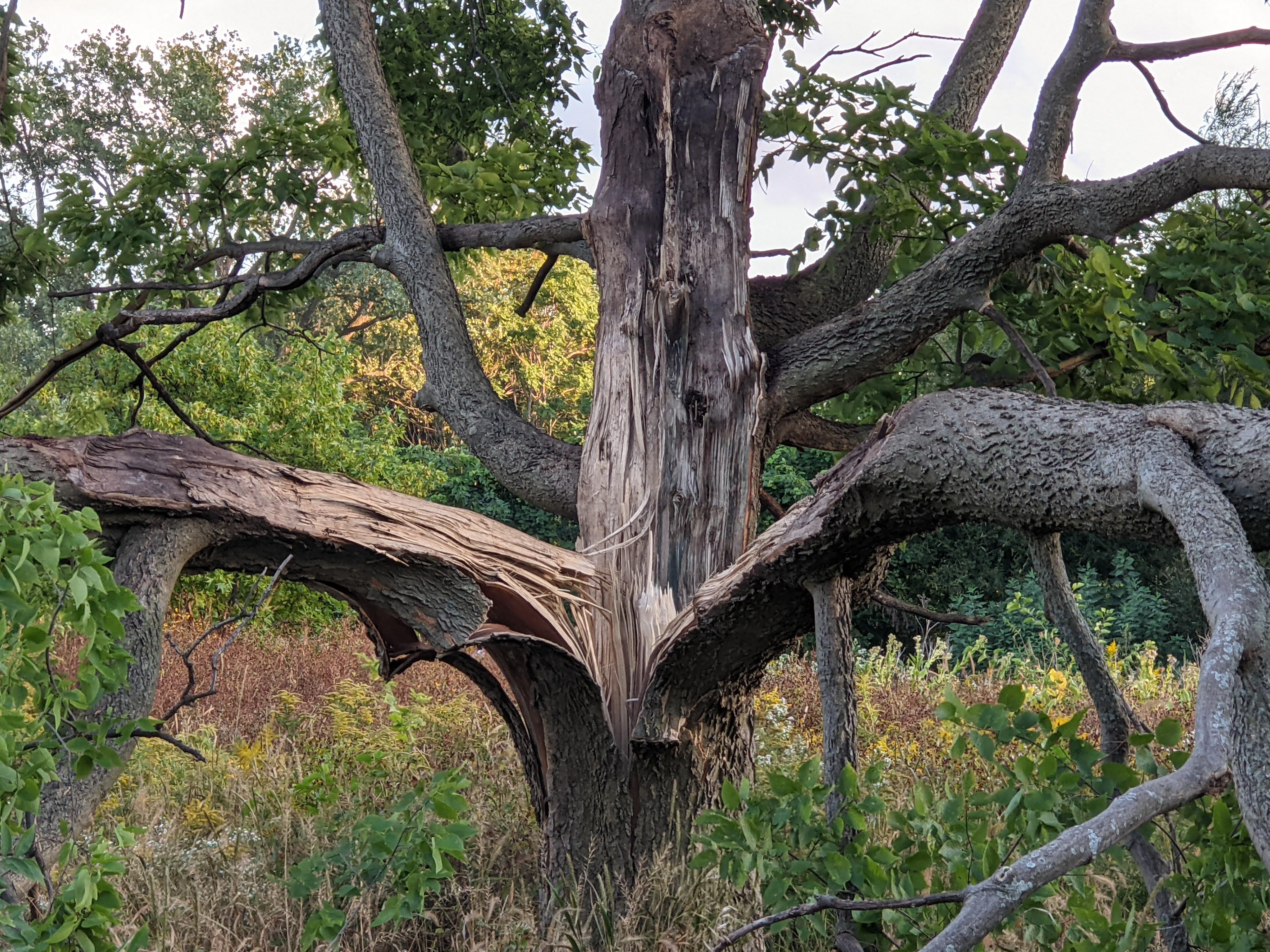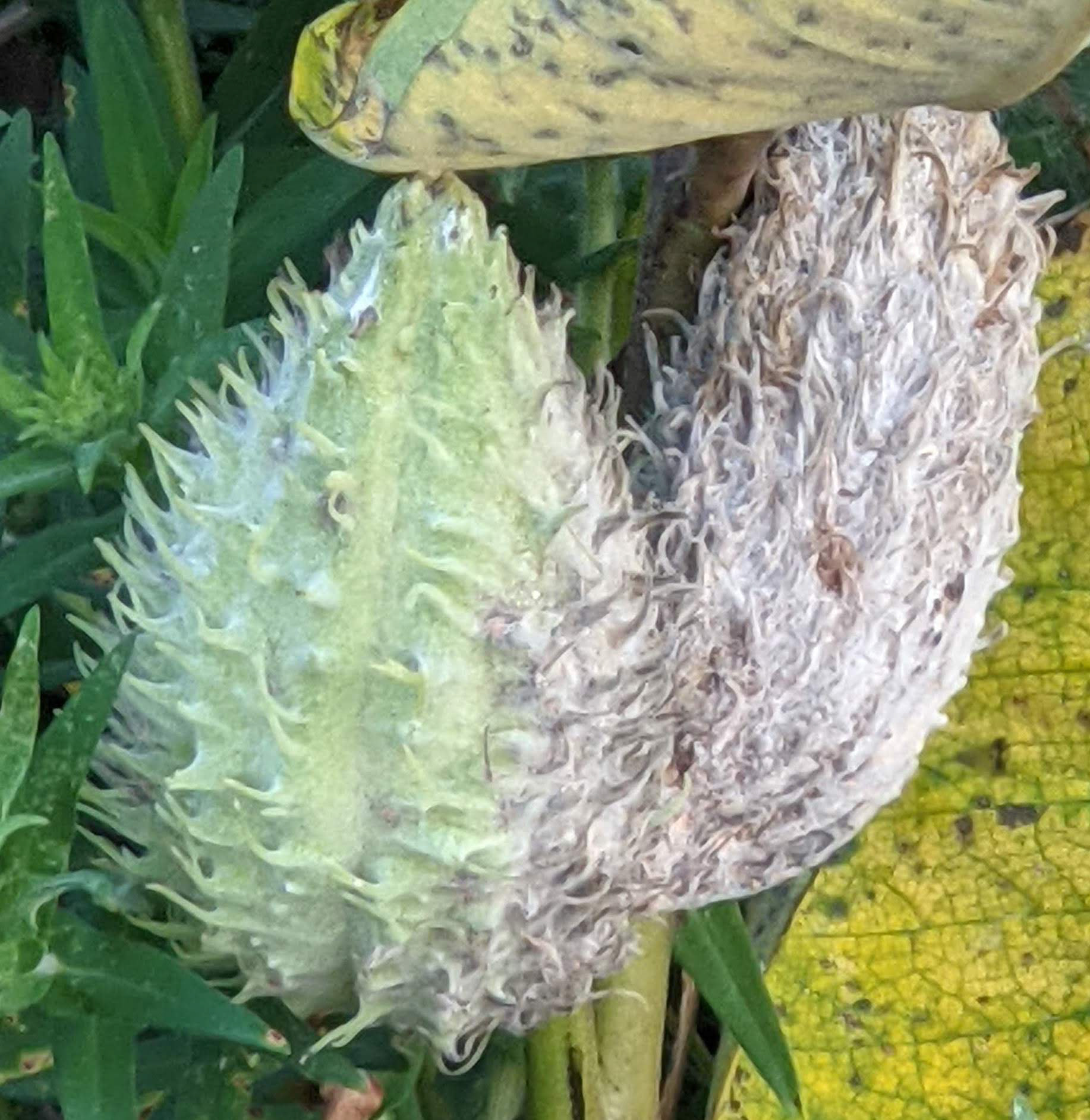Date: 9/20/21,
6:15 - 7:15pm
Location: Montrose Harbor/Lakefront
Conditions: Warm, around 80°
Focus: Ideas from Nature
Observations
On my way to the lakefront I passed by the restorative native plant area. Although it's getting later in the season there are still a lot of flowers blooming, pollinators like bees and moths around them. Some specifics that caught my interest:
-There's an interesting flower that I later found out is part of a wild carrot plant, which I’ve noticed around the area before. It's still green, not yet in bloom, and looks as though the long stringy leaves at the base form a sort of protective "cage" around the bud
-A small flock of geese flew low overhead and settled on the water
-The family of raccoons that usually lives under the rock piles was all that their usual spot tonight - way more than I've ever seen together at once. They simply sat there and looked curious as humans walked by to stop and look at them. They didn't seem to be expecting any food this time.
-A large tree was split into three segments - the main trunk still upright, plus two strips cut eventually and sprawled outward - it looked as if it was struck by lightning (this could have been from the thunderstorms a couple days earlier)
-I saw several common milkweed plants still budding. The pod that encases the milkweed seeds has an interesting form - long and pointed at the tip with bumps on the outside


Wild carrot


Milkweed
Strategies for innovation
-Geese flight has always fascinated me, the way they fly in V formation so that each goose can take advantage of the lift provided by the one in front of them. Similar strategies are used by schools of fish as well to help propel the fish around them and allow each individual to use less energy while swimming. This strategy could potentially be used to improve wind turbine performance. If the turbines were designed and positioned in a way that their movement could generate additional airflow, it's possible they could continue to spin and generate power on days when there is less wind.
-After looking at my photos of the raccoon family, I noticed how their coats seem to camouflage with the rocks they call home. Since raccoons nest in a variety of locations, and since this is an unusual man-made structure that likely offers them protection in a number of other ways besides camouflage (a rock wall barrier, protection from rain and wind), I have to assume this choice of a home for them was a happy accident. However it could serve as design inspiration for other urban features that we may not want to stand out in the landscape. I've seen examples of this in wifi towers made to look like trees - similar tactics could be considered for utility boxes, exposed pipes, and other things that can blend in if they don't need to be seen.
-The oils birds use to waterproof their feathers, as well as the coatings that protect some plant leaves from becoming oversaturated with water could spark some valuable innovations for waterproofing and non-stick coatings. I’ve recently heard more about the dangers of chemical coatings used in Teflon pans and a variety of other products that are being found in water supplies, and thus our own bodies. There are numerous solutions for this in nature that could inspire less toxic options.
-Around my neighborhood there are a lot of buildings, walls, and trees covered in ivy vines. Along with the red brick and Victorian-era row house structures that are prominent around the Lakeview/Wrigleyville neighborhood in Chicago, this ivy has become as iconic as the architecture. One could find inspiration both in its form and the way it grows, and in its cultural and aesthetic significance. Vines meander in whatever direction suits their needs, integrating within either the built or natural environment on which its structure is dependent. This could be a positive influence on the way we plan our built environment - growing around and complementing the surrounding area, and even literally integrating structure with existing natural elements, rather than thinking of them as separate entities. Too often in Chicago, development tends to favor things that eventually dominate and fundamentally change neighborhoods - that is, speculation and more profitable investments (typically luxury condominiums and rental properties). There is much less incentive to consider things that will work within and provide value to the existing community - looking to nature could inspire a shift in those values.